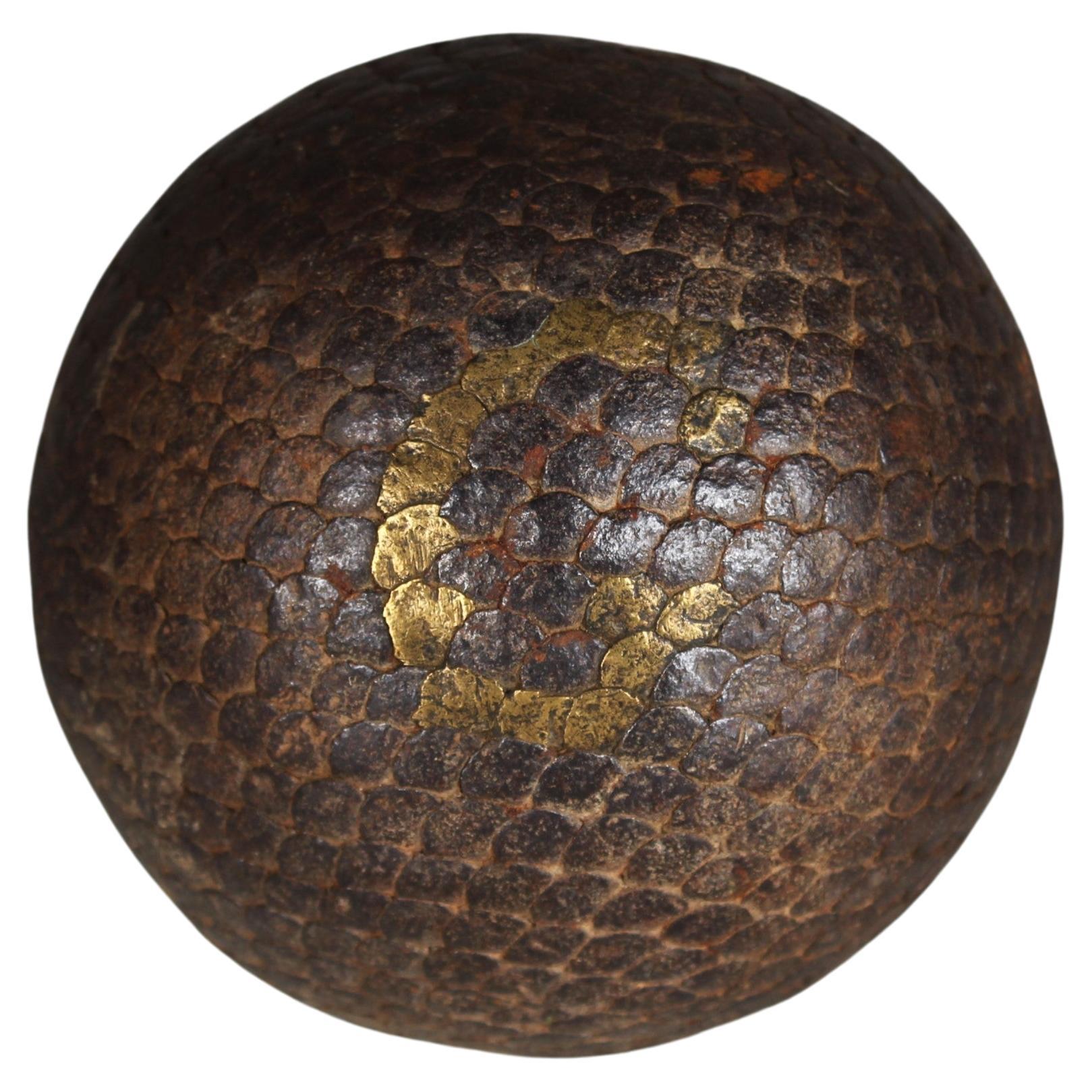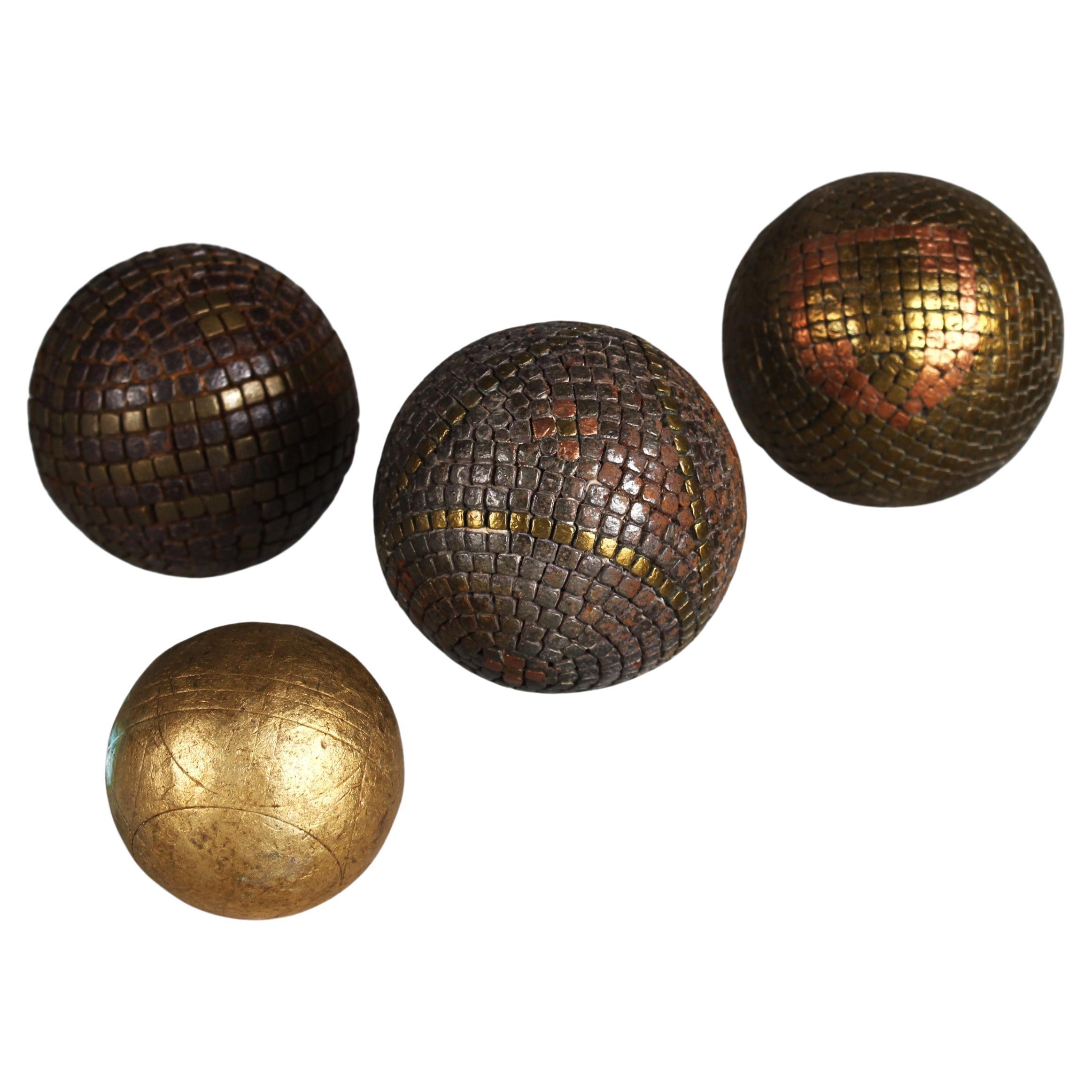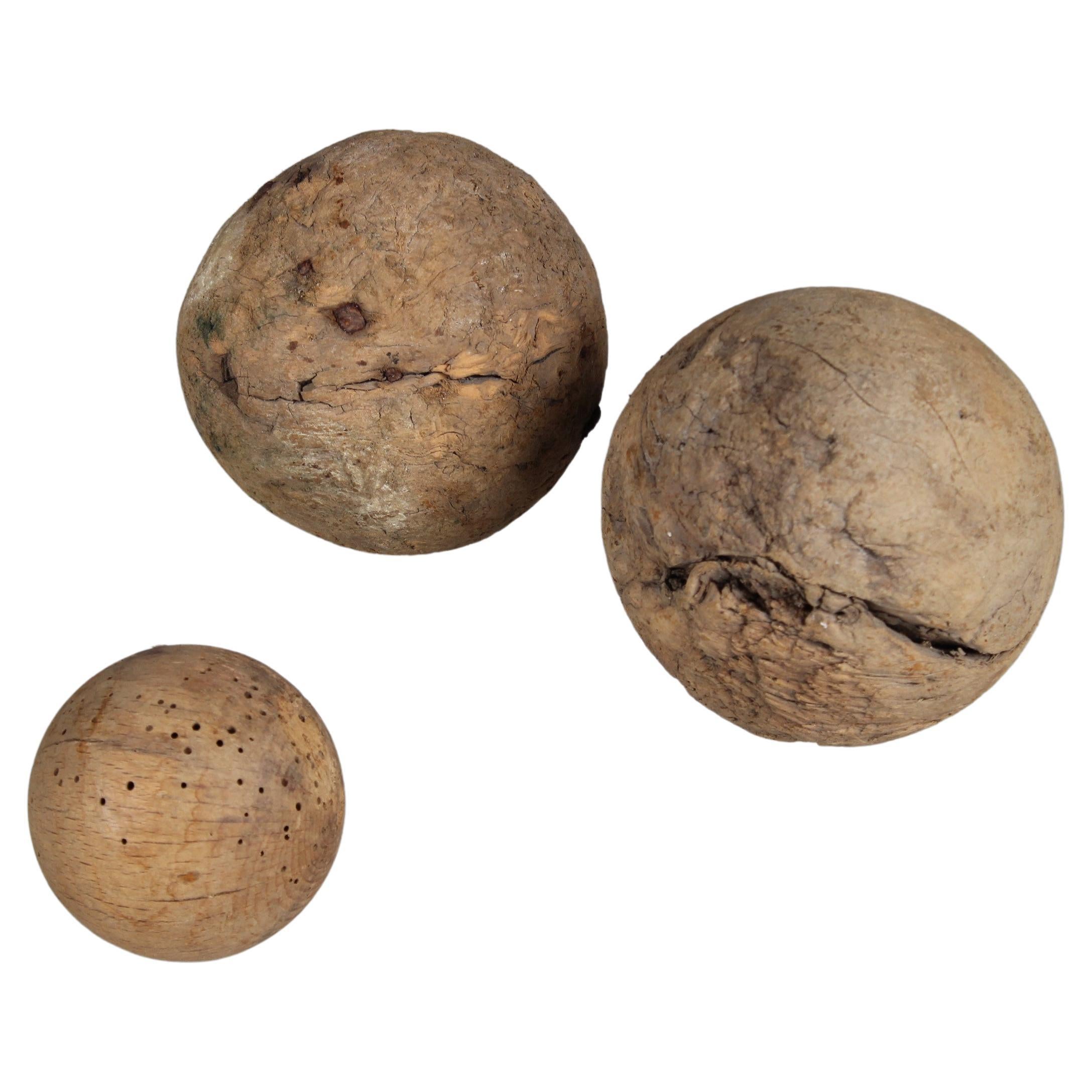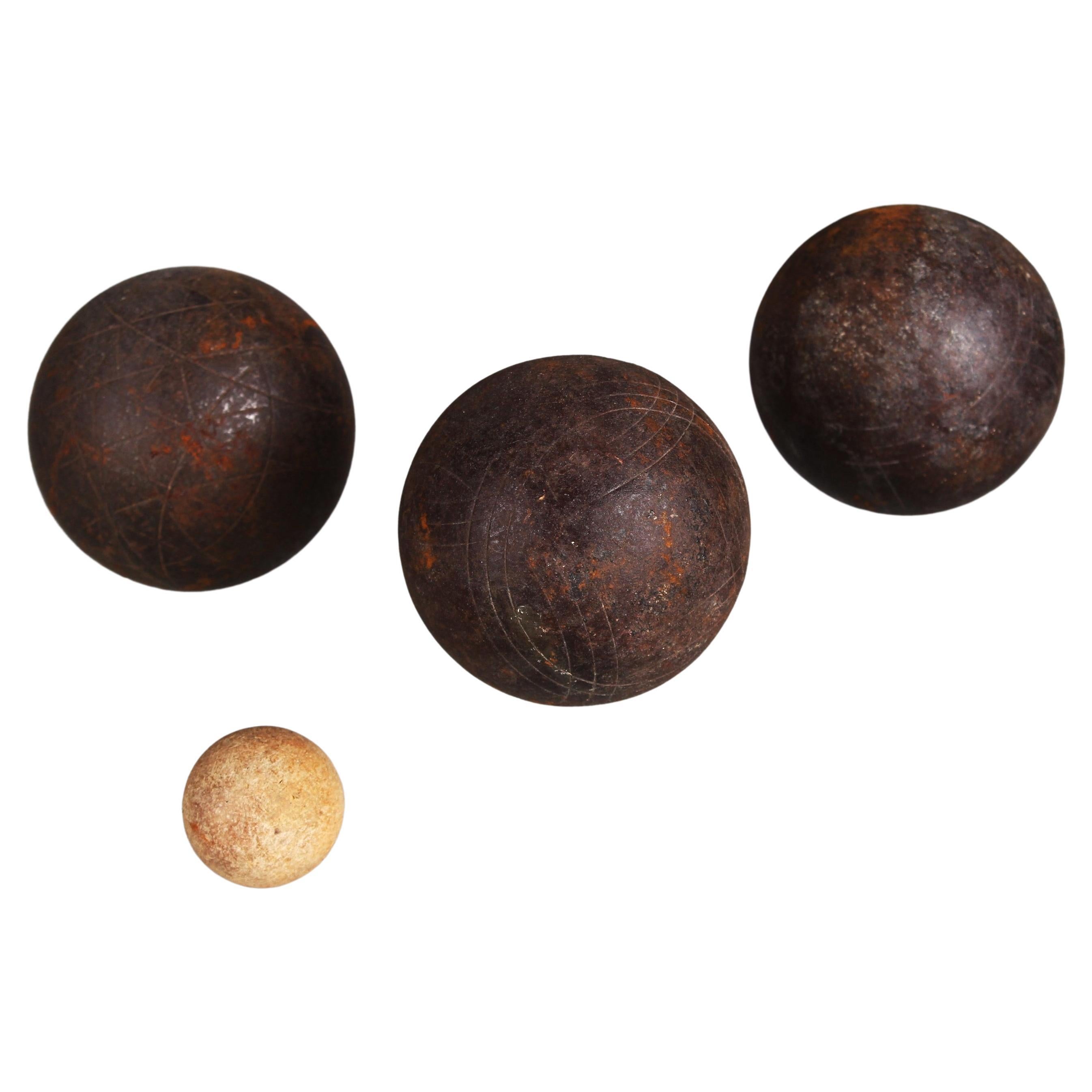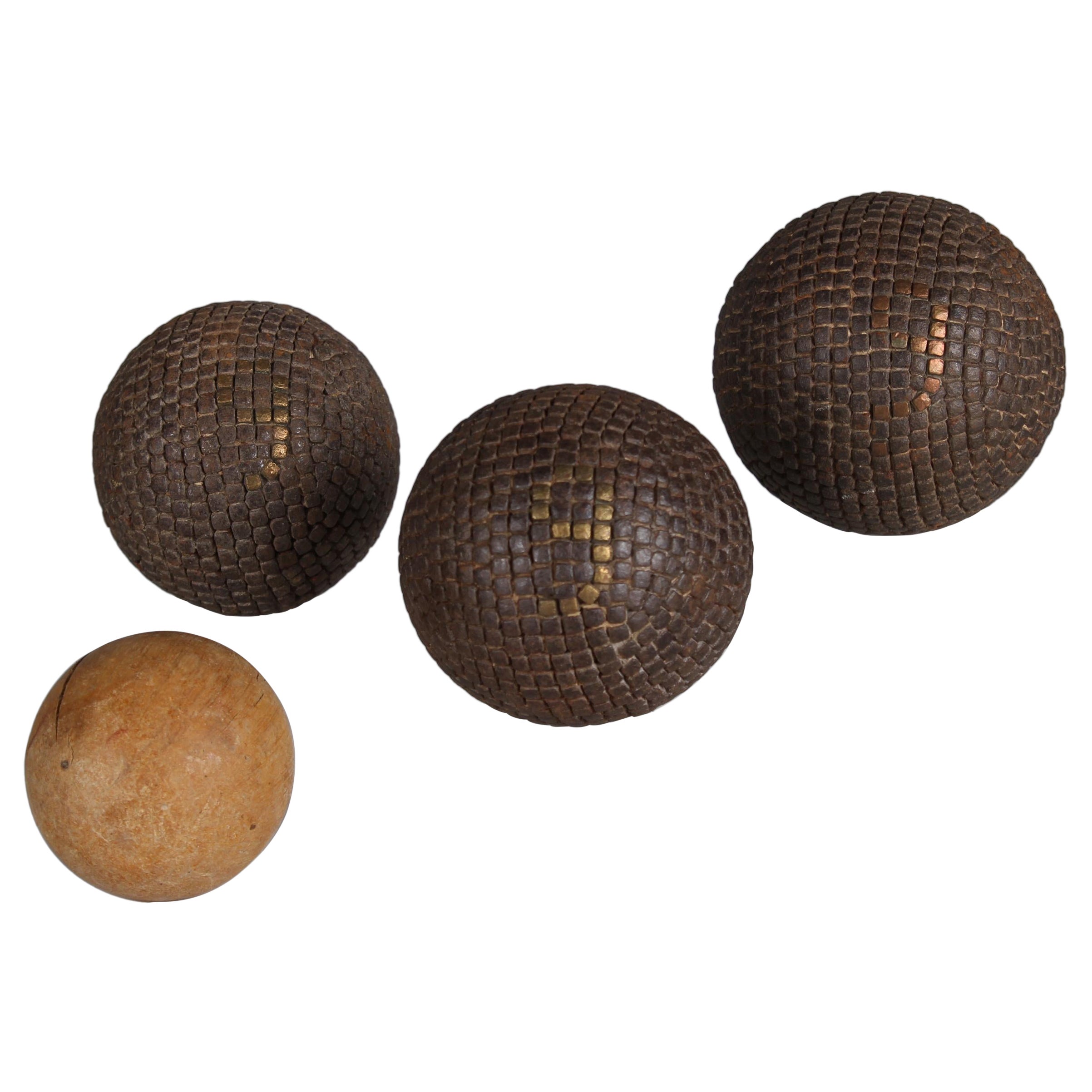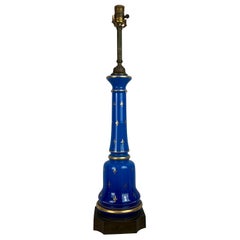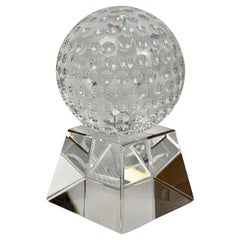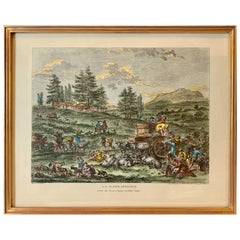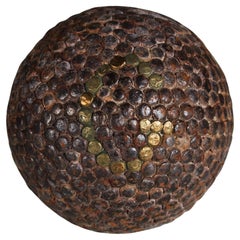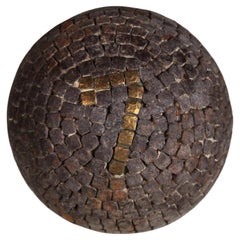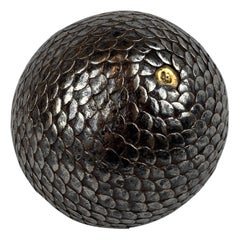
French Game Ball Boule de Petanque #4
View Similar Items
Want more images or videos?
Request additional images or videos from the seller
1 of 7
French Game Ball Boule de Petanque #4
About the Item
- Dimensions:Height: 4 in (10.16 cm)Diameter: 4 in (10.16 cm)
- Style:French Provincial (Of the Period)
- Materials and Techniques:
- Place of Origin:
- Period:
- Date of Manufacture:Mid-19th Century
- Condition:Wear consistent with age and use.
- Seller Location:West Palm Beach, FL
- Reference Number:1stDibs: LU838617354382
About the Seller
5.0
Gold Seller
These expertly vetted sellers are highly rated and consistently exceed customer expectations.
Established in 1972
1stDibs seller since 2007
362 sales on 1stDibs
More From This SellerView All
- French Blue Opaline Glass Lamp with Gold Fleur-de-Lys MotifLocated in West Palm Beach, FLFrench blue opaline glass lamp mounted on a black base. The lamp has gold fleur-de-lys painted on the exterior. Shade not included. Mea...Category
Early 20th Century French Napoleon III Table Lamps
MaterialsGlass, Wood
- Crystal Golf Ball on Crystal Stand in Two PartsLocated in West Palm Beach, FLTwo part handsome crystal golf ball on crystal stand having great clarity. Perfect gift for a golfer to be placed on a desk or shelf. Measures: H-3 7/8" W-2 1/4" Base-2" sq. x 1 1...Category
Vintage 1980s Sporting Art Paperweights
MaterialsCrystal
- "La Pleine Vendange", French Grape Harvest-Hand WatercoloredLocated in West Palm Beach, FLThis vintage print "La Pleine Vendange" or "The Full Harvest" is hand watercolored and depicts the harvesting of grapes in France. It is in a solid black and gold frame. Width-24.5" ...Category
Vintage 1960s French French Provincial Prints
MaterialsWood, Paper
$316 Sale Price20% Off - Period French Eight Light Bronze and Crystal ChandelierLocated in West Palm Beach, FLExceptional period French eight light gilt bronze chandelier having very large thick crystals. These large, thick crystals were used in the 18th and beginning of the 19th centuries....Category
Antique 1790s French Louis XVI Chandeliers and Pendants
MaterialsCrystal, Bronze
- Chaise Longue in Original Paint, Louis XVI, France, c. 1800Located in West Palm Beach, FLLouis XVI chaise longue either late 18th or very early 19th century. This piece remains in original paint with white muslin upholstery. It is supported by eight columnar/fluted legs....Category
Antique Late 18th Century French Louis XVI Chaise Longues
MaterialsFabric, Wood
$4,500 Sale Price30% Off - Wedding Chest with Bronze Inlay on a Custom Stand-France, c. 1860By André-Charles BoulleLocated in West Palm Beach, FLAntique rosewood French wedding chest made as a fancy and expensive gift for the bride. The rosewood chest has gilt bronze stringing and Boulle style inlay of mother-of-pearl and bro...Category
Antique 19th Century French Napoleon III Trunks and Luggage
MaterialsBronze
$2,800 Sale Price20% Off
You May Also Like
- Antique Boule Ball "G", Pétanque, 1880s, France, CraftsmanshipLocated in Greven, DEBeautiful, unique Boule ball, France, late 19th Century. In the 19th century, the manufacture of boules balls underwent significant development in France as the game of boules, particularly the pétanque variant, gained in popularity. The manufacture of boules balls during this period was a manual process that required expertise, precision and love to detail. In the late 19th and early 20th centuries, particularly in rural areas of France and other Mediterranean regions, olive wood was a commonly used source of material for making boules balls. This was not only due to the availability of the material, but also to the outstanding properties of olive wood, which was characterized by hardness, strength and a rich grain. First, the olive wood was carefully selected and shaped into raw balls, which were then sanded to the desired size and shape. The nails were then hammered into the balls one by one, making sure that they were evenly distributed and firmly anchored. Finally, the spheres were polished and coated with a protective varnish to enhance their natural beauty and protect them from the elements. The use of nails to decorate and reinforce olive wood boules was a traditional practice that not only gave the ball a rustic aesthetic, but also improved its durability and contributed to customization. Many balls were made according to the specific requirements and preferences of the players. Nails were driven at regular intervals around the ball, with each nail hole precisely placed so as not to affect the balance and weight distribution of the ball. These nails not only served as a decorative element, but also helped to strengthen the structure of the ball and make it more resistant to the hard knocks and wear and tear during play. Individual engravings or decorations were often applied to the balls to make them unique and identify the player. Antique boules...Category
Antique Late 19th Century French Late Victorian Antiquities
MaterialsMetal
- Antique Boule Ball "G", Pétanque, 1880s, France, CraftsmanshipLocated in Greven, DEBeautiful, unique Boule ball, France, late 19th Century. In the 19th century, the manufacture of boules balls underwent significant development in France as the game of boules, particularly the pétanque variant, gained in popularity. The manufacture of boules balls during this period was a manual process that required expertise, precision and love to detail. In the late 19th and early 20th centuries, particularly in rural areas of France and other Mediterranean regions, olive wood was a commonly used source of material for making boules balls. This was not only due to the availability of the material, but also to the outstanding properties of olive wood, which was characterized by hardness, strength and a rich grain. First, the olive wood was carefully selected and shaped into raw balls, which were then sanded to the desired size and shape. The nails were then hammered into the balls one by one, making sure that they were evenly distributed and firmly anchored. Finally, the spheres were polished and coated with a protective varnish to enhance their natural beauty and protect them from the elements. The use of nails to decorate and reinforce olive wood boules was a traditional practice that not only gave the ball a rustic aesthetic, but also improved its durability and contributed to customization. Many balls were made according to the specific requirements and preferences of the players. Nails were driven at regular intervals around the ball, with each nail hole precisely placed so as not to affect the balance and weight distribution of the ball. These nails not only served as a decorative element, but also helped to strengthen the structure of the ball and make it more resistant to the hard knocks and wear and tear during play. Individual engravings or decorations were often applied to the balls to make them unique and identify the player. Antique boules...Category
Antique Late 19th Century French Late Victorian Antiquities
MaterialsMetal
- Antique Boule Ball "7", Pétanque, 1880s, France, CraftsmanshipLocated in Greven, DEBeautiful, unique Boule ball, France, late 19th Century. In the 19th century, the manufacture of boules balls underwent significant development in France as the game of boules, particularly the pétanque variant, gained in popularity. The manufacture of boules balls during this period was a manual process that required expertise, precision and love to detail. In the late 19th and early 20th centuries, particularly in rural areas of France and other Mediterranean regions, olive wood was a commonly used source of material for making boules balls. This was not only due to the availability of the material, but also to the outstanding properties of olive wood, which was characterized by hardness, strength and a rich grain. First, the olive wood was carefully selected and shaped into raw balls, which were then sanded to the desired size and shape. The nails were then hammered into the balls one by one, making sure that they were evenly distributed and firmly anchored. Finally, the spheres were polished and coated with a protective varnish to enhance their natural beauty and protect them from the elements. The use of nails to decorate and reinforce olive wood boules was a traditional practice that not only gave the ball a rustic aesthetic, but also improved its durability and contributed to customization. Many balls were made according to the specific requirements and preferences of the players. Nails were driven at regular intervals around the ball, with each nail hole precisely placed so as not to affect the balance and weight distribution of the ball. These nails not only served as a decorative element, but also helped to strengthen the structure of the ball and make it more resistant to the hard knocks and wear and tear during play. Individual engravings or decorations were often applied to the balls to make them unique and identify the player. Antique boules...Category
Antique Late 19th Century French Late Victorian Antiquities
MaterialsMetal
- Antique Boule Ball "G", "J", Pétanque, 1880s, France, CraftsmanshipLocated in Greven, DEBeautiful, unique Boule ball, France, late 19th Century. Decorated with the initials "G" and "J". In the 19th century, the manufacture of boules balls underwent significant developm...Category
Antique Late 19th Century French Late Victorian Antiquities
MaterialsOlive
- Antique Boule Set, Boule Balls, Pétanque, 1880s, France, CraftsmanshipLocated in Greven, DEBeautiful, unique Boule set of three Boule balls and one target ball, France, late 19th century. In the 19th century, the manufacture of boules balls underwent significant developme...Category
Antique Late 19th Century French Late Victorian Antiquities
MaterialsOlive
- Antique Boule Set, Boule Balls, Pétanque, 1880s, France, CraftsmanshipLocated in Greven, DEBeautiful, unique Boule set of three Boule balls, France, late 19th century. In the 19th century, antique metal boules balls experienced a renaissance that took the game of boules to a new level. These ornately crafted balls were not only instruments of the game, but also symbols of elegance and sophistication in leisure activities. Made from high-quality metals such as steel or brass, Boule balls were forged and polished by skilled craftsmen to ensure a smooth and even surface. The antique boules...Category
Antique Late 19th Century French Late Victorian Antiquities
MaterialsMetal
Recently Viewed
View AllMore Ways To Browse
Antique Wooden Balls
Hand Beaten Brass
Bocce Balls
Petanque Boules
Antique Bocce
Used Petanque Boules
Antique Bocce Balls
Petanque Balls
Antique Petanque Balls
Pre Columbian Beads
Pre Colombian Art
Pre Columbian Peru Chimu
Pre Columbian Nayarit
Italy Christmas Ornament
Antique Barber Items
Hermes Folk
Moche Vessel
Straight Razor

